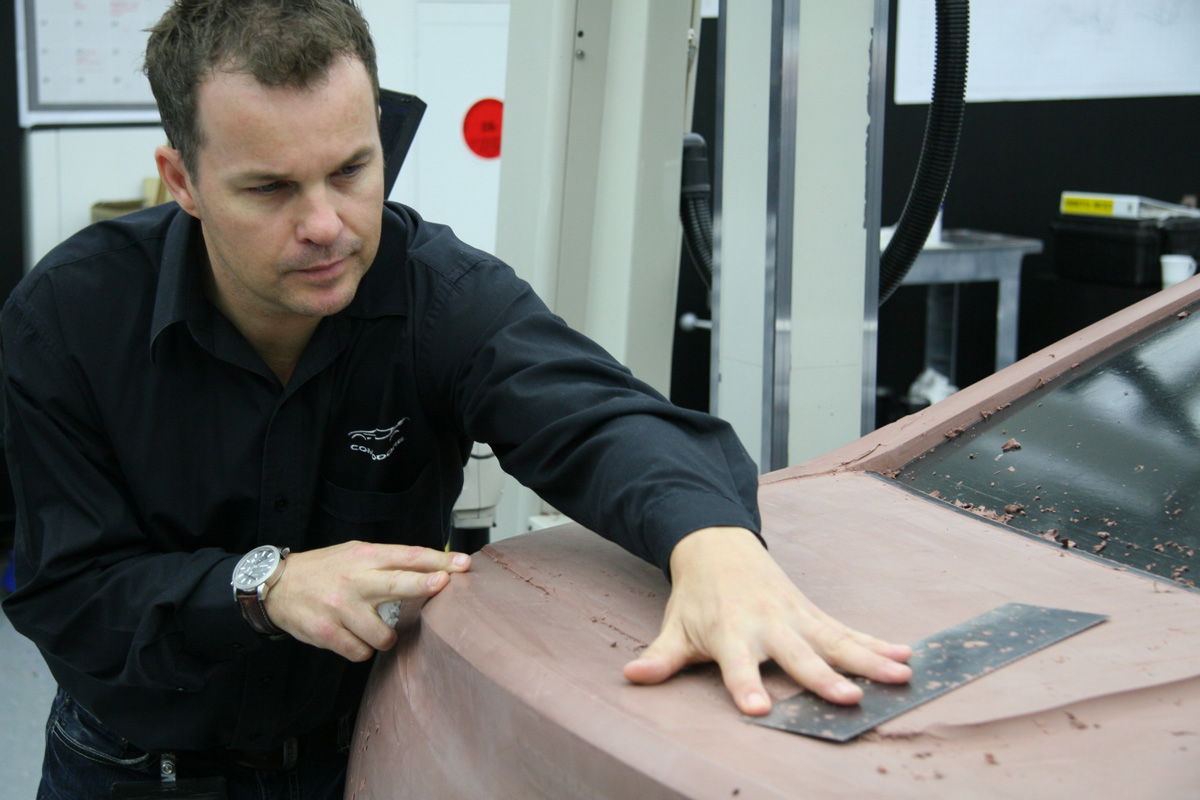

Peter Hughes has designed some of HRT’s most iconic liveries and has been in the game long enough that he can retro himself, which he says is a scary thought.
There are very few motor racing professions that divide public opinion quite like livery design, the annual team reveal often loved or loathed by pundits.
Liveries are ultimately what fans use to identify their favourite car or driver by and are usually the base for which merchandise is accordingly styled upon.
Arguably one of the most experienced designers in the business, Peter Hughes has been influential in Holden’s visual philosophy for 30 years.
In his tenure, he was part of the iconic Commodore era through the late 1990s and early 2000s, arguably his most significant achievement that of the VE design from front-to-back.
Now, after 164 years, Holden has shut its doors, and after 14 years as a design manager with the brand, Hughes is focusing on a passion project.
Hughes’ interest in motor racing began at a young age. His father, a prominent rally driver, competed against the likes of Colin Bond and Peter Brock.
His family had always been arty, and it was only natural that he combined his passion for motor racing with his artistic ability.
Out of high school, Hughes completed an industrial design course at MIT and soon joined a tooling company that designed and built body kits for Holdens.
“I did some contract work for HDT back in the day,” Hughes told Speedcafe.com.
“We did the Aero too, which was like an evolution of Brock’s VL era, but we did it on a VN.
“I designed that for HDT at the time and that’s when I met Bob (Holden) for the first time, he came out and had a look at it.
“We launched that at Milton Motor Show, Holden saw it. I got a phone call and then an interview and then I got a job at Holden as a designer in 1990.”
At just 23 years old, Hughes had found himself designing the back end of the VR Commodore and then the VT Commodore.
However, his interest in livery design wasn’t on the radar.
“Obviously the motorsport stuff wasn’t happening,” Hughes explained.
“It was put to the side because this was actually pure car design.
“I got in the door and started working on the back of VR Commodore I think was the first job I had.
“Then pretty soon we’re all working on the VT Commodore, which was a huge, huge job and awesome.

“You’ve got the creative designers, which is the job I’ve got, then there’s a lot of obviously tech guys, clay modellers, there’s a whole team of a hundred people making it happen.
“But the actual design theme or the front of the VT ended up being mine. So I got to do the front of the VT, which is pretty cool at a pretty early age.”
Having stepped up to lead designer of exteriors in 1996, Hughes’ first interaction with the Holden Racing Team came in 1997.
His then boss Mike Simcoe, who is now the vice president of General Motors, had developed a relationship with Walkinshaw Racing and the Holden Racing Team as their livery designer.
Fans will remember the cars of the mid-1990s largely sporting a dark blue and white colour scheme, it was only when Hughes arrived that red came back into the pallet.
While the livery project still wasn’t his priority at the time, he looks back on the design with fond memories.
“In ‘97 Holden wanted to do something different,” said Hughes.
“They came and saw Mike who gave it to me and then I did the ‘97 car. That’s when we started to add red back into the design for Holden.
“It was cool. To be really blunt, it actually wasn’t the priority in our workload at the time in the day.
“We had VT coming and it was going to be such a huge thing and we knew that we were going to beat AU hopefully in looks at appearance and sales.
“That was at the forefront of our mind. Basically making VT beat AU. The race car was just nice to have.
“It was like a run out of that car. So they just came to me quickly and said ‘Come up with something quickly to run out the VS and maybe add some red’ blah, blah, blah.
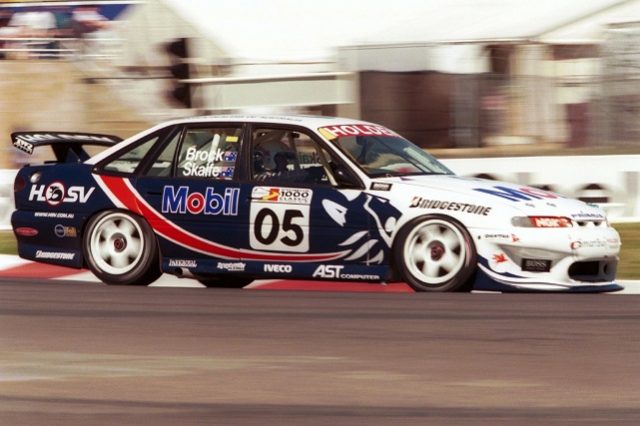
“Then we did it. It’s only now all these years later that you look back and you think it was such a nice thing that I had the opportunity to do and change the direction what HRT was doing.
“It’s a more sentimental thing now than it ever was 20 years ago.”
The 1997 Australian Touring Car Champion saw Peter Brock claim sixth in the standings, claiming his final career win at Oran Park in the Holden VS Commodore.
Greg Murphy finished four that year and won three rounds across Symmons Plains, Mallala, and Oran Park.
“It’s not so much that it’s a fabulous design or anything like that. I think it’s more of what car was,” said Hughes.
“It was Brock’s last season. It’s the last year he won a race in the car, and then Brock was racing Skaife and they put it on pole, Lowndes and Murphy won in it at Sandown.
“It was significant, even though the year before was just amazing in ‘96. ‘97 was living it for other reasons with the whole Brock finishing and stuff like that.
“I’m just obviously privileged to be able to do that car and have that link to that year, which was really nice.
“The car itself, yeah I like the car itself, it’s an evolution of all the ones that come before it just with the red added and a little bit of my style with the swishiness like the Nike swoosh up the side.”
Hughes continued to focus on his role at Holden designing the VX road car. Meanwhile, Holden brought on a new livery designer for 1998.

However, Hughes recalled the design fell flat among the Holden executives and he was asked to return for 1999 to make a “more aggressive” design.
Once again, the following year saw the livery design job go elsewhere while Hughes made the step up to Design Manager of exteriors, a role he held until the demise of the brand in 2020.
It wasn’t until the advent of the VE that Hughes stepped back into the livery design fold.
“All this period I was out because I was managing design jobs,” he said.
“I was about to lead the VE Commodore, which is a massive part of my life because that was from front to back, my design.
“I wanted to make sure that was spot on. So that period of 2001 to 2005 I just did not look at a race car at all.
“Justin Thompson he did the 2005 car, which won Bathurst. He left to the United States, working in Detroit.
“At the time Simon McNamara was running the motorsport bit of Holden and he gave me a quick call and he goes, ‘Hey, Justin’s gone overseas, can you quickly do something for the 2006 car?’
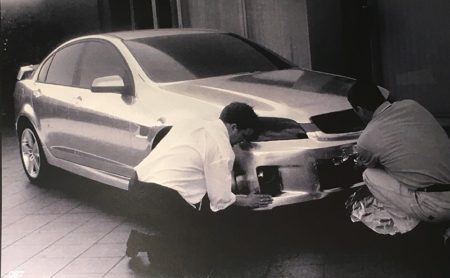
“So we just gave what Justin did a tweak and added some black. I got to know Simon really well. He’s still a good mate today. We did the 2006 car and that’s when I got back into it.”
Having designed the VE road car from start to finish, Hughes put his hand up to design the test livery and the Holden Racing Team scheme.
“With the VE coming, I said, ‘I really want to do all the race stuff for the VE because the cars are my design and I want to do the race car for it.’
“So we did the test car and then we did the DayGlo red HRT car. Then from there through to today, I haven’t left.”
Since 2007, Hughes has been the main man for the factory Holden team, working with Walkinshaw Racing (2007-2016) and then Triple Eight Race Engineering (2017-2020).
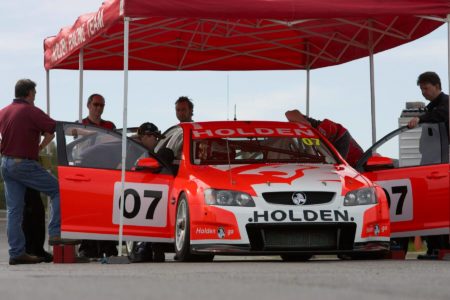
The job doesn’t come without its challenges, however.
The signing of Holden to Triple Eight Race Engineering to become Red Bull Holden Racing Team resulted in a difficult design process.
“When we got to 2017 and entered a new contract with Triple Eight, it’s completely different whereby Red Bull were the primary sponsor, and Holden were also the primary sponsor,” Hughes explained.
“So that became a challenge even though the car is very simple, that first car is so simple. The arguments behind that car are just the labels. They went on forever.
“We cannot have a lion near a bull was a huge one for Red Bull. No other animal. And then they had the sensitivity around the lion helmet logo, which is a Walkenshaw thing, actually owned by Holden. Did they want to use that logo on the car? How do you put that logo next to a bull?
“There were all these things to go through and so many iterations of the one car, it did get tedious and tiresome because the basic car was just a matte blue car with red details.

“So from a design point of view, there wasn’t a lot of freedom. It was just moving things around until everyone was happy.
“Honestly, that’s how modern cars are interpreted. It’s so hard to do anything too pure and literal like the old HRT cars because they sell every space of the car separately now.”
Earlier this year General Motors announced its departure from the right-hand-drive marketplaces by the end of 2020.
As a result, Holden’s anticipated demise was brought and so too was Hughes’ redundancy from the company.
Amid the demise of Holden, Hughes has dedicated more time to his motor racing art prints business.
He’s no longer bound by his ties to Holden and has since designed his first Ford Mustang in the Supercars, that being the Boost Mobile-backed car of James Courtney.
“What’s next? Because I won’t be employed by General Motors I can be flexible,” said Hughes.
“I’ve had phone calls from both Ryan (Walkinshaw) and Roland (Dane) saying we’d love you to do whatever we do in the future, which I’m really keen to do.
“That shows me their faith in my ability to do their cars and make it professional and nice as possible going forward. It’s nice to have that kind of endorsement.
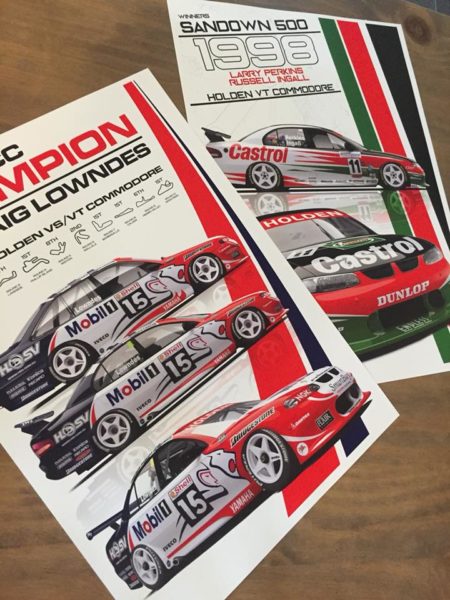
“So, although it’s sad that Holden’s gone and that part of my career, 30 years is over, I’m a glass half full rather than empty.
“I just want to get on with it and do the next step. I don’t know what that is. It’ll probably be something to do with motorsport, my print business and stuff like that.
“I don’t intend to go back to the corporate world. I’ll hang around with my buddies in the race teams and do pretty cars is pretty simple. I might be looking at that. That’d be nice, wouldn’t it.”
Hughes takes a sentimental view to the death of Holden as a brand.
He hopes its legacy can continue in the artwork that he produces, which hangs upon thousands of walls across Australia and New Zealand.
“Holden’s finished, but I don’t think Holden’s going to go away,” he said.
“I think we should just celebrate it, embrace it, look back on it as a wonderful area of our motorsport history.
“I enjoyed doing it, I enjoy capturing all the old Holdens and the new techniques. That’s fun. That’s keeping me busy, so I’m trying to make a business out of that if I could.”
Peter Hughes’ Top 5 favourite liveries
1. 1997 HRT: My first HRT livery, the first real use of red, and Brock’s last season.

2. ‘08 HRT: 60th Anniversary Bathurst car. Chrome lion, black lowers, looked unique and balanced.
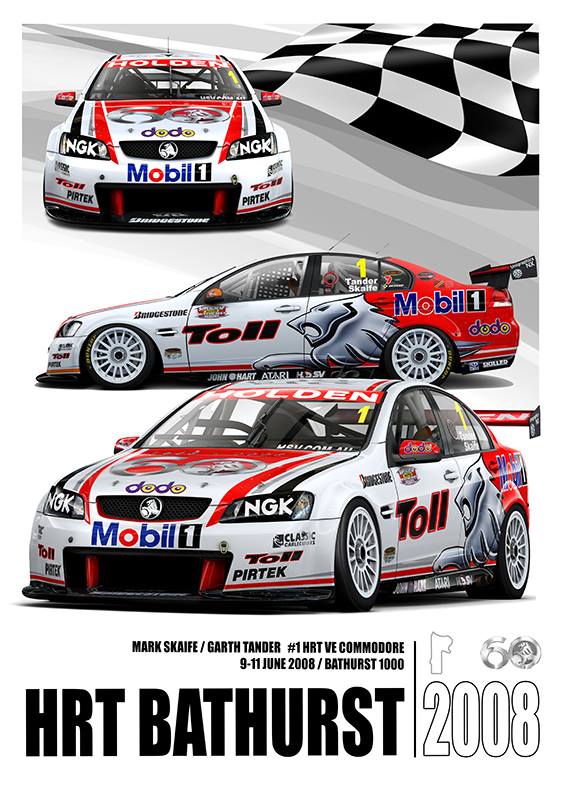
3. ‘98 Perkins VT: The first VT. Took the iconic Castrol livery and tried to give it a contemporary edge. Suited VT at the time perfectly.

4. ‘11 HRT: New Direction, new lion/helmet, totally new look. And it won!
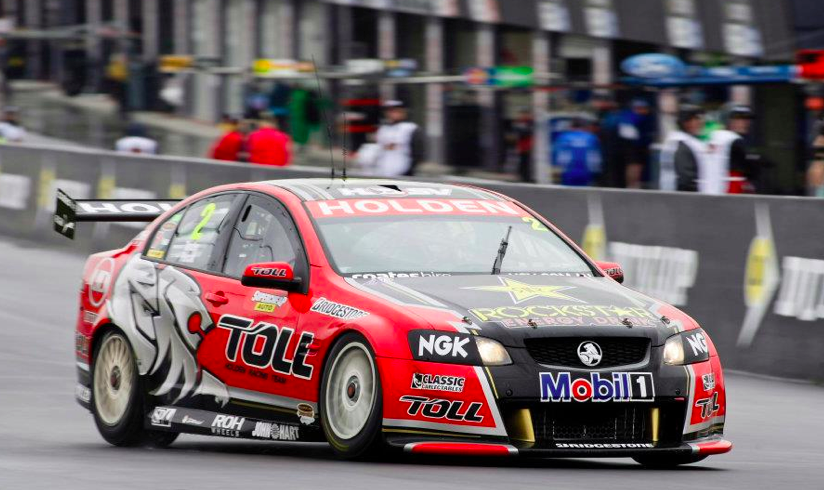
5. ‘19 RBHRT Retro: Proof that simple and bold stands out. This car meant so much at the time.




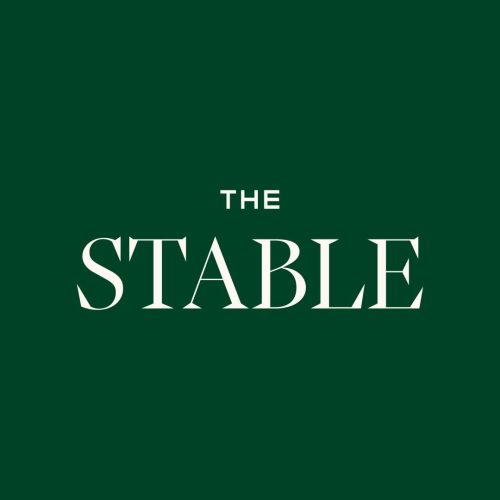
















Discussion about this post